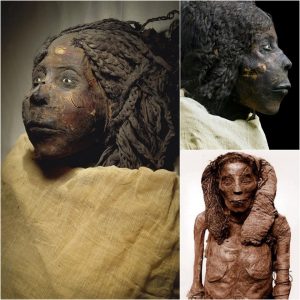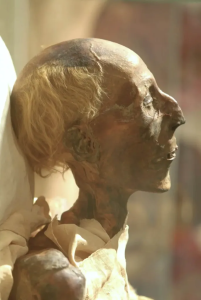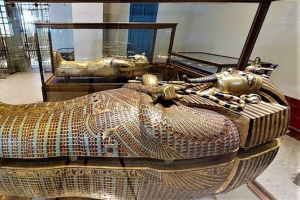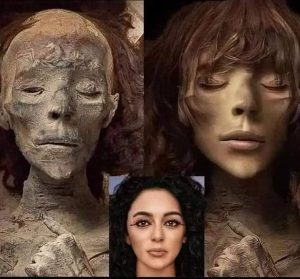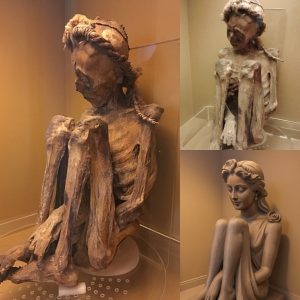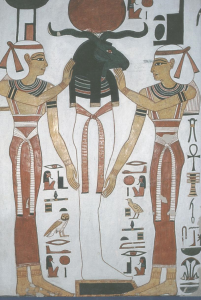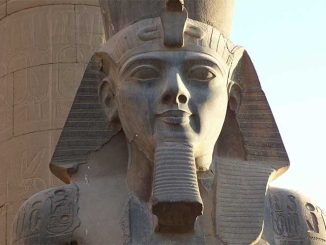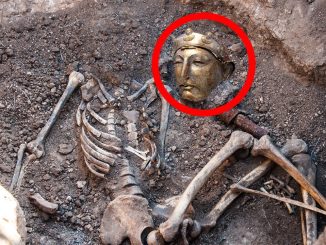The mummy of Lady Rai is one of the oldest known mummies uncovered in Egypt. She was discovered in 1881 and researchers estimate that she was about 30 – 40 years old when she died around 1530 BC.
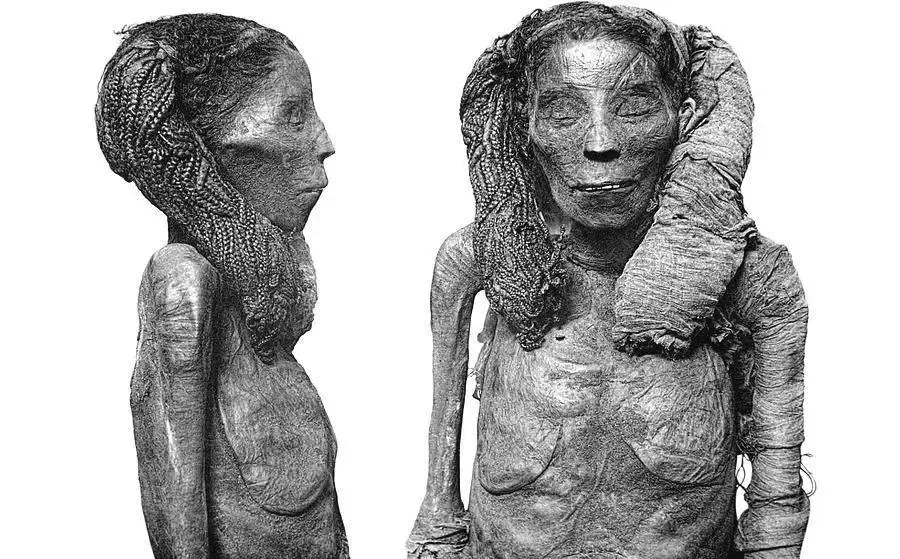
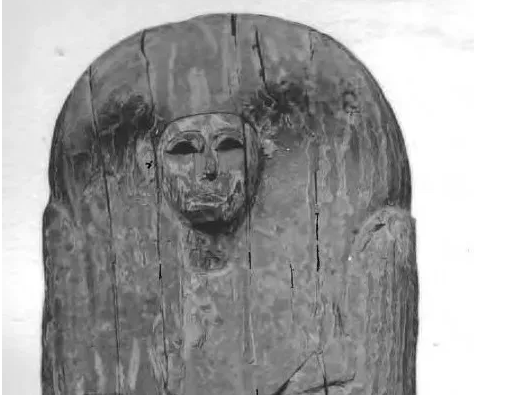
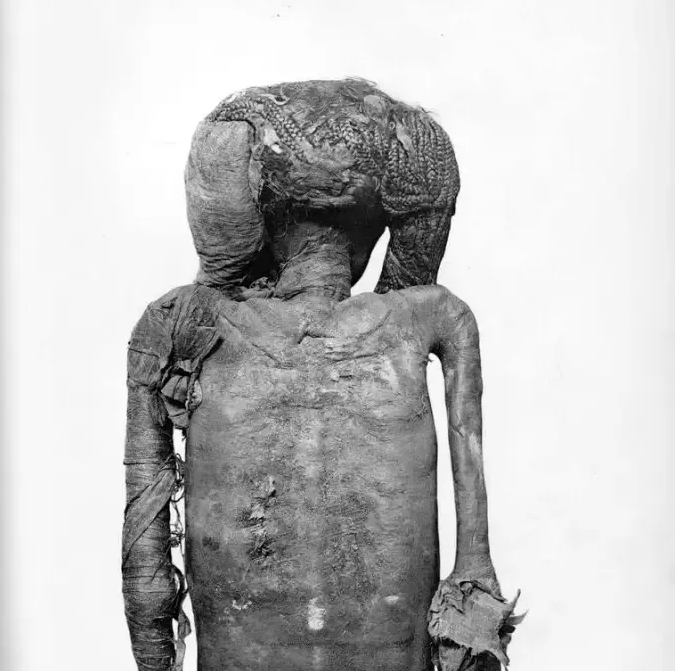
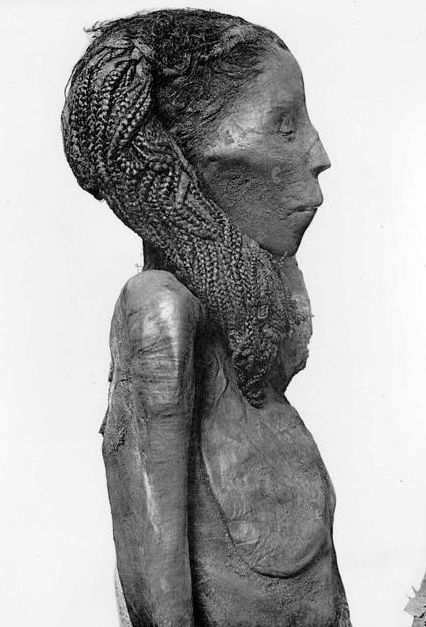
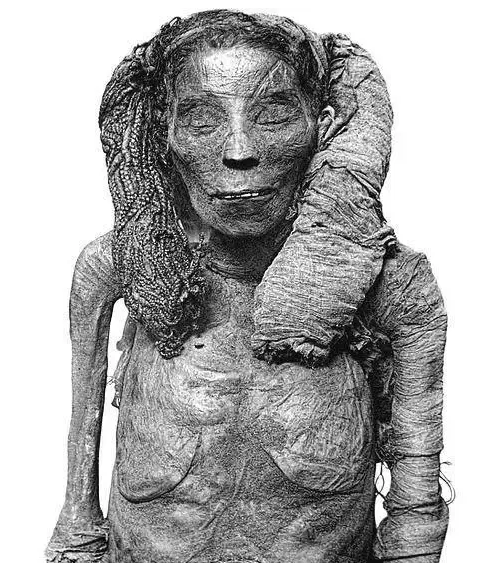
From the writings left behind about Lady Rai, we know that she was the nursemaid to Queen Ahmose-Nefertari, who was the first Queen of the 18th Dynasty of Ancient Egypt. The mummified body of Ahmose Inhapy, the aunt of Ahmose Nefertari was found in Lady Rai’s outer coffin.
Lady Rai’s embalming process involved being wrapped in linen. Her face and body were coated with a mixture of resin and sand. There was an embalming incision on the the left side of her body which was covered with an embalming plate. Jewelry would have been placed on her right wrist during the mummification process.
In 2009, researchers conducted a CAT scan of Lady Rai’s body and discovered that she had atherosclerosis. She is the oldest known mummy with the disease and several other Egyptian mummies also show signs of atherosclerosis.
Lady Rai (ca. 1570/1560-1530 BC) was an ancient Egyptian woman of the early 18th Dynasty who served as nursemaid to Queen Ahmose-Nefertari.
Her mummified remains were discovered in the Royal Cachette (TT320) next to Deir el-Bahari in 1881 and she is estimated to have been in her 30s at the time of her death.
The mummy was unwrapped by Grafton Elliot Smith in 1909. He distinguished her mummy as “the most perfect example of embalming that has come down to us from the early 18th Dynasty, or perhaps even of any period”. Now in the Egyptian Museum, Cairo.
